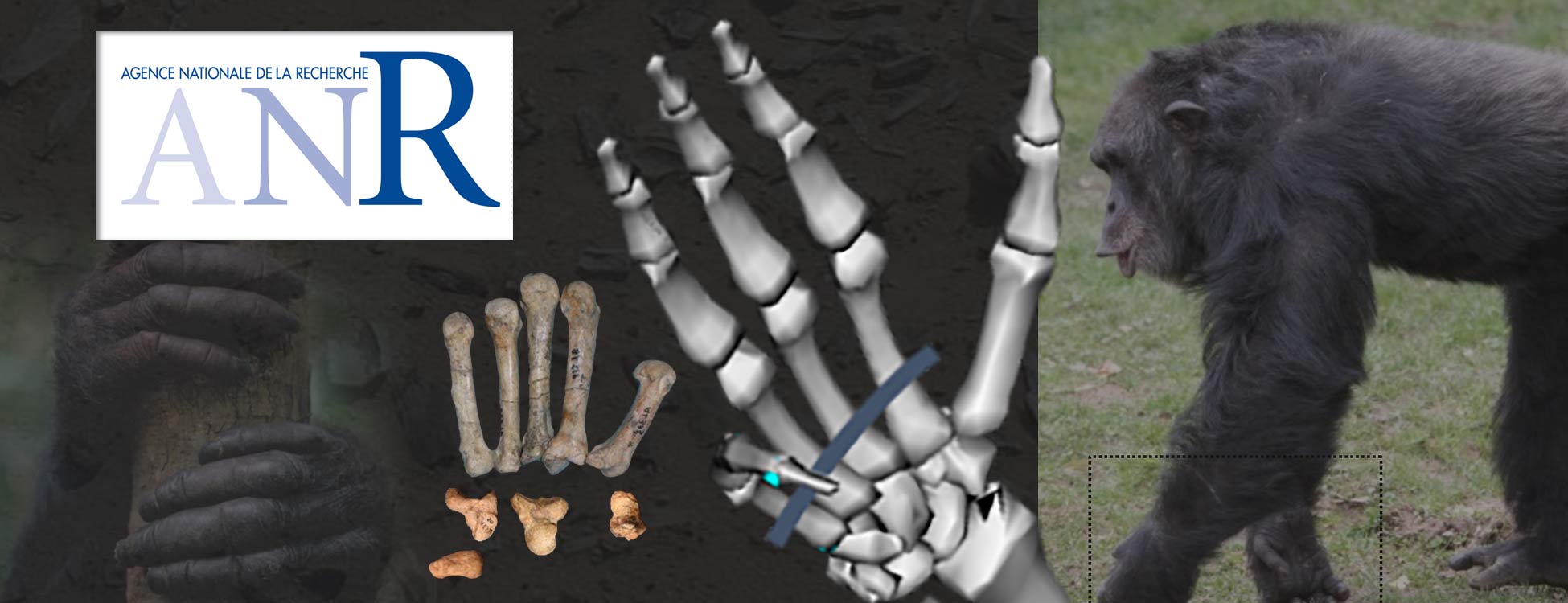HOMTECH
HOMinin TECHnology : Cognition, motricity and behavior of the first stone-tool makers
Characterizing the cognitive, motor, and behavioral skills
of the earliest-known stone tool makers
Principal Investigators
- Sandrine PRAT (HNHP)
- Guillaume DAVER (PALEVOPRIM)
Type of project
HOMTECH is a collaborative project funded by the French National Agency for Research, 2018-2023.
Research questions
The HOMTECH project aims at establishing in which aspect the making of stone tools is a feature of the human genus, as well as better understanding the nature of evolutionary processes at play during its evolution.
The transdisciplinary project HOMTECH (HOMinin TECHnology. Cognition, motricity and behaviour of the first stone-tool makers) seeks to reconstruct the cognitive capacities, motor capabilities and subsistence behaviours of the first stone tool makers (Lomekwian and Oldowan), integrating archaeology, palaeoanthropology, archeozoology, neurobiology and biomechanics.
Since the discovery of the oldest archaeological site yet found at 3.3 million year old stone tools in Kenya (Lomekwi 3: LOM3), by members of this project, which (1) pushed back the beginning of the tool archaeological record by 700,000 years, and (2) pre-dated the Homo genus by 500, 000 years, some fundamental questions concerning the origin of technological skills and hominization processes must now be revisited. This innovative transdisciplinary research project will provide a unique opportunity to discuss the uniqueness of the oldest stone-tools, fill the gap between Lomekwian and Oldowan sites, understand the differences in terms of complexity in the sequencing actions of Lomekwian and Oldowan, and appreciate if they were used to access animal carcass resources. This project attempts to better apprehend the identity of the first stone-tool makers, the Pliocene and early Pleistocene hominin diversity and its link with behavioural processes (subsistence, landscape use). It will also contribute to better understand the evolution of higher order cognitive functions such as planning, involved in tool-making and foraging, by bridging the gap among existing data on modern human, non-human primates and hominin fossils. It will also allow to distinguish the sets of upper limb and hand characters functionally associated with human-like manipulation from those linked to retained arboreal locomotor behaviour. This project will be focused on fieldwork and fossil studies from Lake Turkana, Northern Kenya, which is crucial in human evolution studies and considered as “Cradles of Humankind”. We will focus on the period between 3.5 and 1.5 Ma, which corresponds to the first lithic industries and the period of a main shift in terms of culture, behavior, anatomy and climate. This multidisciplinary project will use the extremely rich field data collected by the West Turkana Archaeological Project in Northern Kenya (WTAP/MPK, dir. S. Harmand), including the discovery of a stone tool assemblage securely dated at 3.3 Ma (LOM3), as well as the recent discovery of new archaeological sites and faunal and hominin remains. We will undertake technological analyses of the lithic production, using the chaîne opératoire concept as a tool for analysis, as well as a comparative anatomy and morphometrics on hominins, humans and non-humans primates (osteology, neuroanatomy). We will also develop an experimental replication program, combining neurophysiology and biomechanics to assess the biomechanical and cognitive mechanisms involved in producing the oldest technologies (Lomekwian and Oldowan). These results will also contribute to the on-going debate on the definition of the genus Homo, its behavioural specificities and underlying evolutionary processes. It is part of a huge debate related to one major question: does technology, i.e. knapping stone tools, is linked to the Homo genus and make us human?
This fundamental research project on prehistoric archaeology, cognitive archaeology, human evolution and cultural heritage intends to contribute to the advances of knowledge in the domain of the dawn of innovation, cognition, motricity and human origins. This research field has a strong appeal to a large scientific and non-scientific audience, either nationally or internationally. The project, based on fieldwork data and analytic data, should provide the first long-term evolutionary framework for understanding the biological, and behavioural contexts of the first hominin technologies, which are crucial to understand the origin of technological (innovation) skills and hominization processes.
Some Results
The project was built on the ground of results obtained by a previous ANR project (ARCHOR – dir. S. Harmand, Stony Brook Univ.), and for which many experiments of tool replications were made. The results demonstrated the compatibility of the body constraints and postures systematically tested during these replication session with archeological and anthropological data currently established for the end of the Pliocene and the earliest phases of the Pleistocene.
Partnership
The HOMTECH consortium includes two teams: HNHP (UPVD/MNHN) and PALEVOPRIM, as well as seven other institutions/teams involving a dozen of scientists. In this framework, field missions (notably in Kenya), experiment on extant models, and many study missions in European and African museums will be conducted.
Find out more
- National Agency for Research (ANR)
- HOMTECH website: http://homtech.prd.fr/
Iconic publications
Domalain M., Bertin A., Daver G. (2017) Was Australopithecus afarensis able to make Lomekwian tools? Towards a realistic biomechanical simulation of hand force capability in fossil hominins and new insights on the role of the 5th digit. Comptes-Rendus Palevol 16, 572-584.
Harmand S., Lewis J.E., Feibel C.S., Lepre C.J., Prat S., Lenoble A., Boes X., Quinn R.L., Brenet M., Arroyo A., Taylor N., Clement S., Daver G., Brugal J.-P., Leakey L., Mortlock R.A., Wright J.D., Lolkorodi S., Kirwa C., Kent D.V., Roche H. (2015) 3.3-Ma Stone Tools from Lomekwi 3, West Turkana, Kenya. Nature 521, 310-316.




